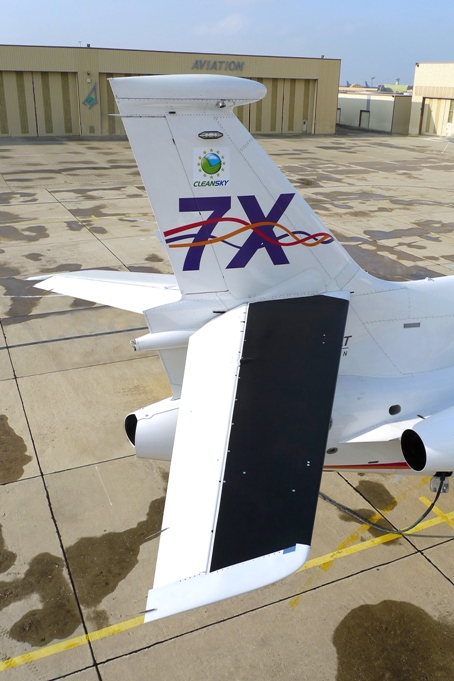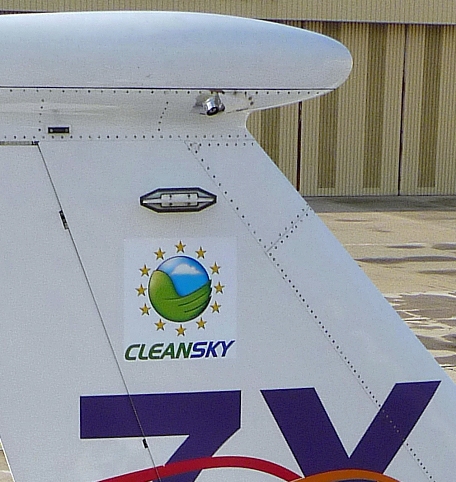Dassault has completed a flight test using a new FLIR Systems infrared camera designed to differentiate between laminar flows and the more typical turbulent flows on a wing.
Part of the "Smart Fixed Wing Aircraft" effort under the European Clean Sky research programme, the equipment and analyses are precursors to planned "smart laminar wing" flight tests in 2014 on specially modified Airbus A340-300 by Airbus, Dassault and other partners.
Dassault, which is interested in drag-reducing laminar flow wings for business jets, says the technology offers the "largest potential for a dramatic decrease in drag" compared to other aerodynamic innovations.
While laminar flow wings are currently used on some sailplanes and small business jets, Dassault says "demonstrations and analysis on a larger scale have yet to be performed to confirm possible efficient and safe application on larger aircraft."
In the recent test at Dassault's flight test centre in Istres, France, the company modified the right horizontal stabilizer of a Falcon 7X with a black covering and mounted the IR camera, which senses minute changes in temperature in the flow, to look down on the surface from the top of the horizontal tail.
 |
|---|
©DASSAULT AVIATION |
 |
©DASSAULT AVIATION |
While the 7X was not designed with laminar wing technology per se, the company says that at high altitudes a "laminarity" of up to 40% is predicted to be present on the top surface of the horizontal stabilizer.
"The results, which are still under analysis at Dassault Aviation and ONERA (the French national aerospace research centre), do show laminar extensions as expected," says Phillipe Rostand, future falcons programme manager for Dassault. "The tests also permitted us to qualify new measurement techniques and equipment" for the upcoming A340 tests.
Source: Flight International



















